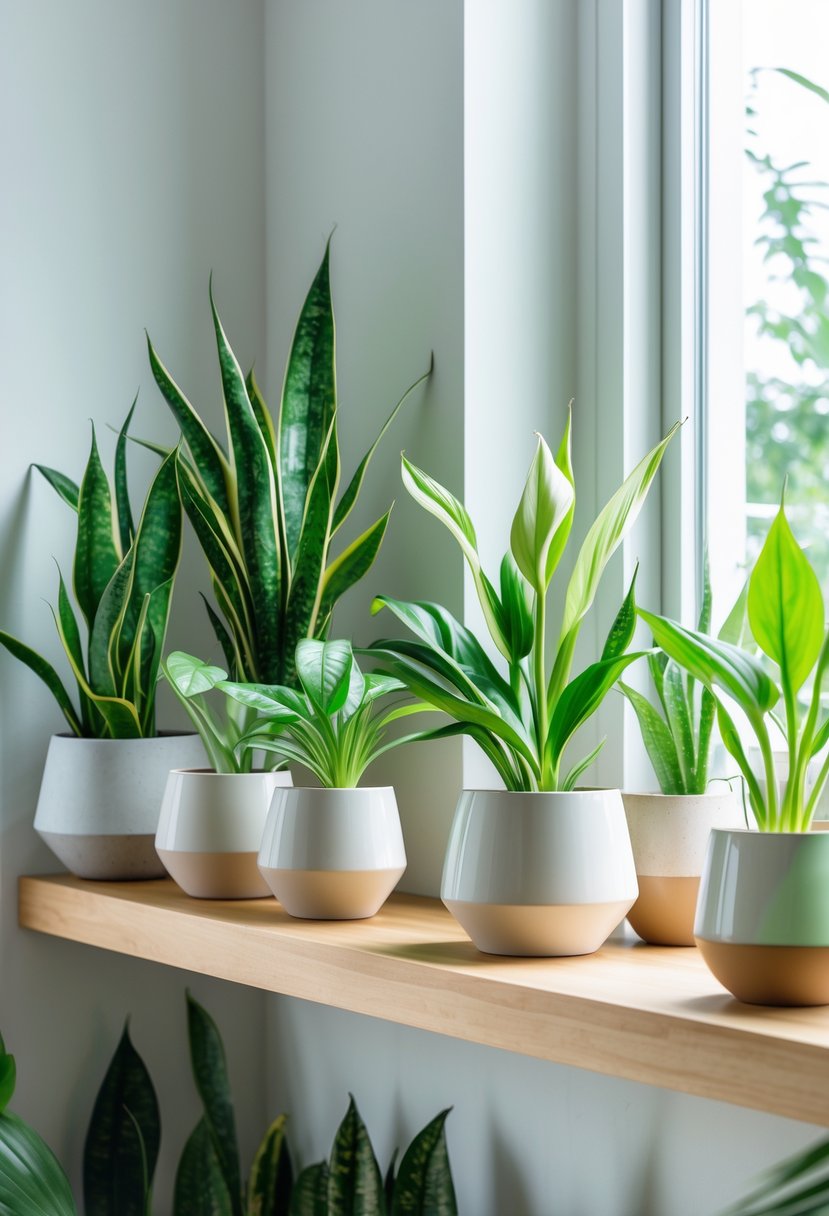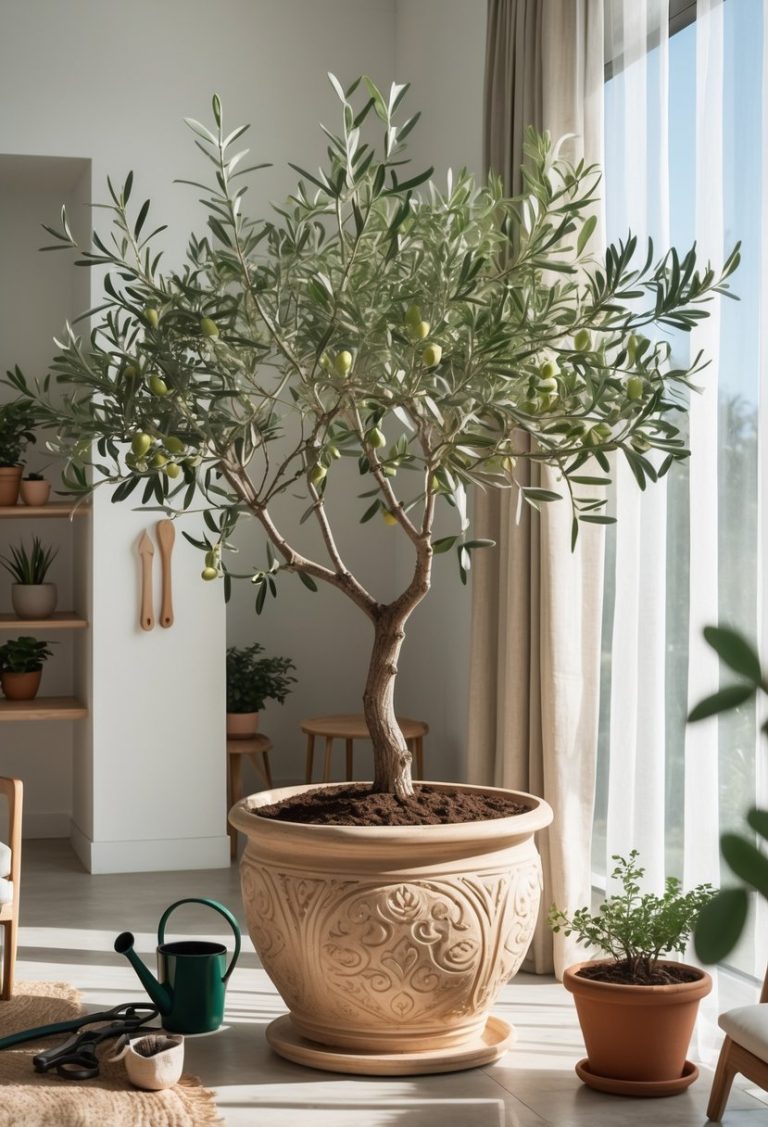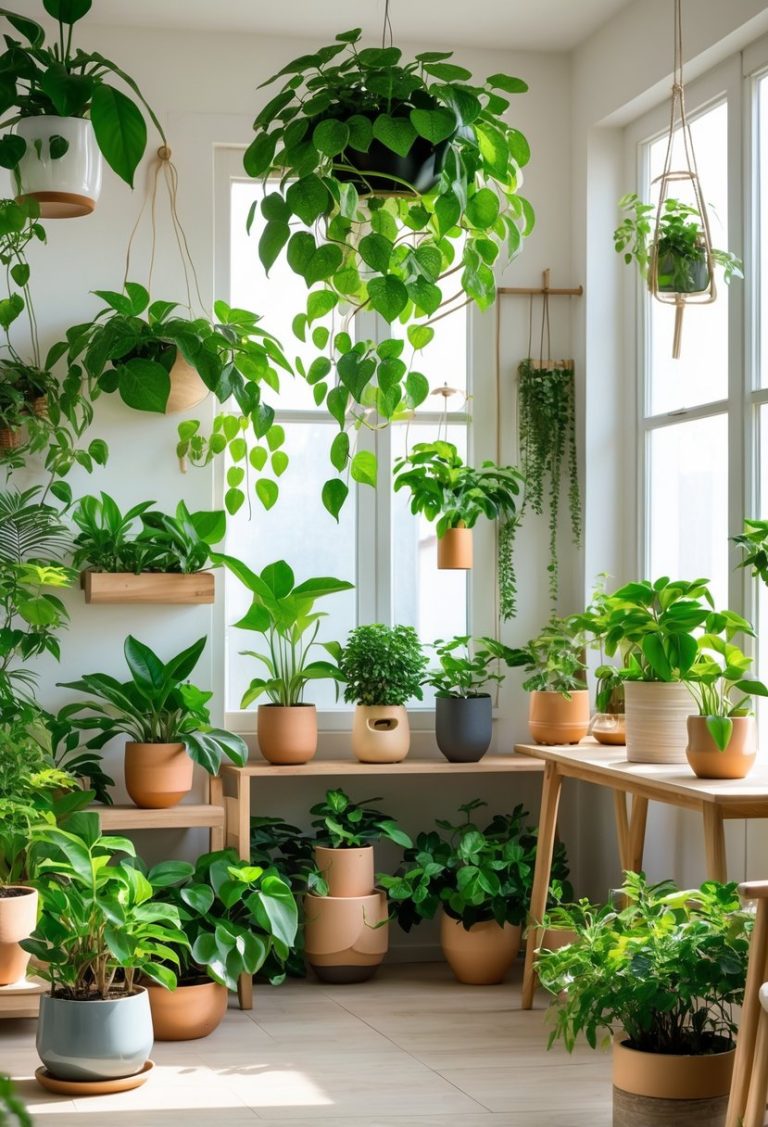8 Best Indoor Plants For Mold Prevention and Air Quality Improvement
Mold can cause problems in your home by affecting air quality and damaging surfaces. Keeping mold under control is important for a healthy living space. One simple way to help manage mold is by using indoor plants.

Certain indoor plants can reduce humidity and help prevent mold growth in your home. These plants work by absorbing moisture and purifying the air, which creates a less favorable environment for mold. You can place them in areas where mold is likely to develop to support cleaner, fresher air.
1) Peace Lily

You can use a Peace Lily to help reduce mold in your home. This plant lowers humidity, which stops mold from growing.
It also cleans the air by removing mold spores and other harmful particles. The Peace Lily is easy to care for and works well in places like bathrooms and laundry rooms.
Its white flowers and green leaves add a nice look while helping keep your space healthier.
2) English Ivy

English Ivy is a strong choice for reducing mold spores in your home. It can lower airborne mold by up to 78% in just 12 hours.
This plant prefers bright, indirect light but can also survive in lower light. It needs regular watering but should not stay too wet.
You can place English Ivy in small spaces like bathrooms to help control moisture and improve air quality.
3) Boston Fern

Boston ferns thrive in humid spaces, making them ideal for bathrooms or kitchens. You can rely on them to absorb excess moisture through their leaves. This helps reduce mold growth in damp areas of your home.
They also tolerate low light, so you don’t need a bright spot. Boston ferns can improve air quality by filtering out some chemicals. Keep them misted regularly to maintain their health and effectiveness.
4) Snake Plant

You can trust the snake plant to help reduce mold by absorbing extra moisture from the air. It grows well in low light and needs very little water.
This plant also improves air quality by releasing oxygen at night. It is easy to care for, even if you forget to water it sometimes.
If you want a low-maintenance option that helps control humidity, the snake plant is a good choice for your home.
5) Bamboo Palm

You can use the Bamboo Palm to help control mold in your home. It absorbs moisture from the air and reduces humidity, which helps stop mold growth.
This plant prefers indirect light and needs regular watering to thrive. It also improves air quality by filtering out toxins.
The Bamboo Palm is a good option if you want a green plant that cleans the air while helping keep your space dry.
6) Spider Plant

You can use the spider plant to help reduce humidity in your home. It absorbs moisture through its leaves, which helps lower dampness that causes mold.
This plant is easy to care for and grows well in different light conditions. It also improves air quality by removing some pollutants.
The spider plant produces small offshoots, so you can share or grow more plants easily. It is a practical choice for mold prevention indoors.
7) Areca Palm

You can use the Areca Palm to help control indoor humidity. It absorbs moisture from the air, which can reduce mold growth.
This plant prefers bright, indirect light. It is low-maintenance and good for beginners.
Besides humidity control, the Areca Palm also cleans the air by removing some toxins. It adds a natural, calming look to your space.
8) Orchid

You can use orchids to help control mold by reducing indoor humidity. They grow well in warm, moist places like bathrooms.
Orchids need indirect light and should be watered lightly, allowing roots to dry between waterings.
While they don’t remove mold already present, they help prevent mold by keeping the air balanced. Their blooms also bring a nice touch to your space.
How Indoor Plants Help Prevent Mold

Indoor plants help control the environment in your home in ways that lower the chances of mold growth. They improve air quality, manage moisture levels, and reduce mold allergens. Each of these actions plays an important role in keeping your space healthier.
Air Purification Mechanisms
Plants clean the air by absorbing harmful substances through their leaves. They take in mold spores and other particles, stopping them from floating freely in your rooms. This helps reduce the number of airborne mold spores that can settle and grow.
Certain plants, like spider plants and palms, are especially good at filtering the air. Your plants also release oxygen during photosynthesis, which promotes better air circulation. Improving air flow helps to prevent stagnant air, a common cause of mold growth.
You will notice fresher air when you have plants indoors because they remove toxins and pollutants that make spaces damp and unhealthy.
Humidity Regulation
Mold thrives in wet, humid conditions. Many indoor plants absorb moisture through their leaves and roots, reducing the amount of water vapor in the air. This lowers indoor humidity and makes it harder for mold to grow.
Plants like orchids and ferns are natural humidifiers and dehumidifiers. They balance moisture by either taking it in or releasing it, depending on the surroundings. This living regulation is continuous and helps maintain stable humidity levels.
By managing moisture, your plants prevent damp spots on walls and surfaces—common hiding places for mold.
Reducing Mold Allergen Levels
Mold allergens cause allergic reactions and breathing problems. When spores are trapped by plants, they do not spread as easily into your lungs.
Some plants break down mold allergens into harmless compounds using natural enzymes. This means allergens in your home can be lowered without needing harsh chemicals or sprays.
Adding these plants to your living space helps create a less irritating environment, especially for people sensitive to mold. You can feel more comfortable and breathe easier with fewer allergens around.
Tips for Caring for Mold-Resistant Houseplants

To keep mold-resistant houseplants healthy, focus on controlling moisture and providing a clean environment. Proper watering and the right soil setup are key to preventing excess humidity and mold growth around your plants.
Proper Watering Techniques
Water your plants only when the top inch of soil feels dry. Overwatering creates damp conditions that encourage mold. Use a pot with drainage holes to prevent water from sitting at the bottom.
Water slowly and evenly to allow moisture to soak into the soil without flooding it. Avoid getting water on the leaves, since wet foliage can promote mold and mildew.
If you notice condensation or standing water on the plant surface or soil, reduce how often you water. During colder months, plants usually need less water because the soil dries more slowly.
Choosing the Right Potting Mix
Select a potting mix that drains well to avoid soggy soil, which attracts mold. A mix with materials like perlite, sand, or bark helps keep air flowing around the roots.
Avoid heavy garden soil or mixes that hold too much moisture. A good potting mix should balance moisture retention with drainage.
You can also add activated charcoal or orchid bark to your soil mix. These help absorb excess moisture and prevent mold growth in the root area.






